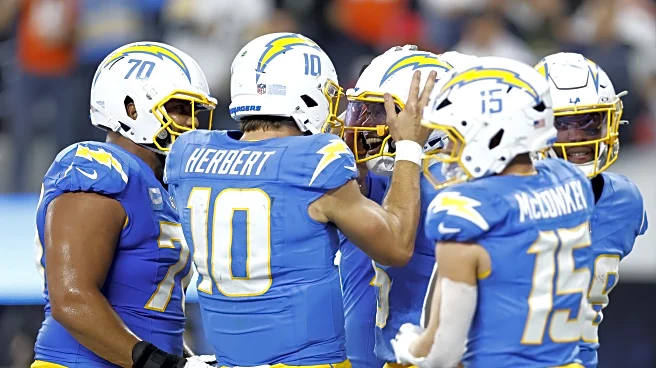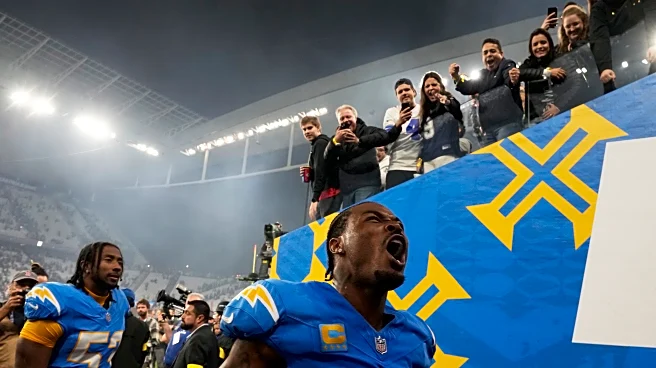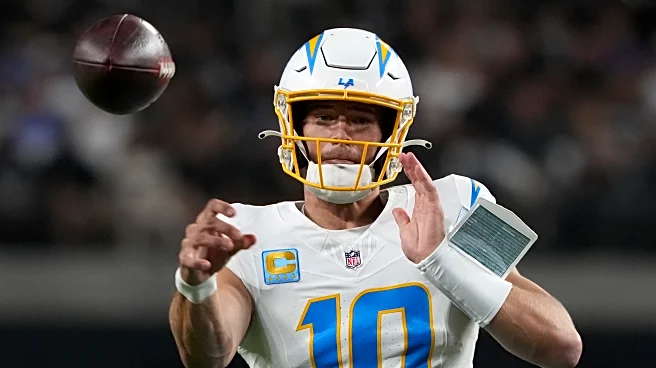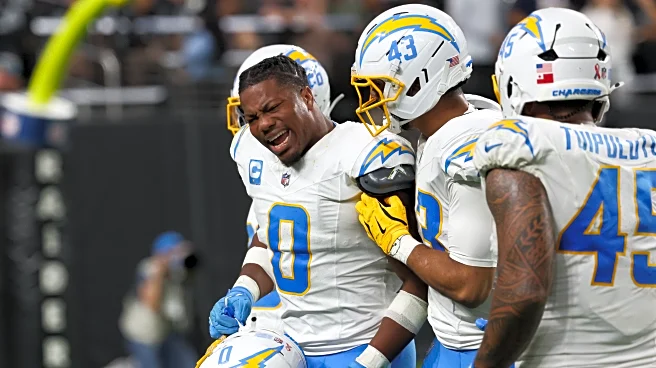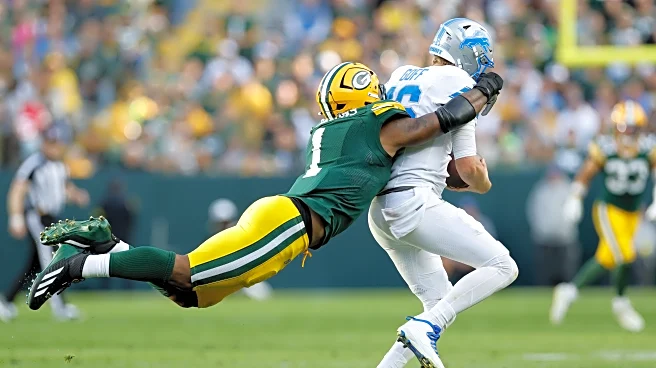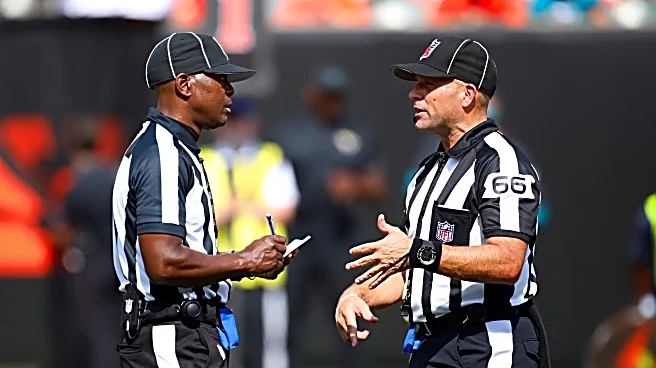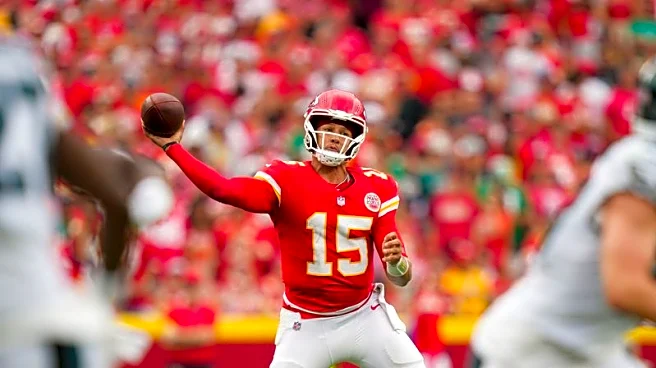What's Happening?
The Los Angeles Chargers have started the NFL season with a strong 2-0 record, securing victories against the Kansas City Chiefs and Las Vegas Raiders. Despite their success, the Chargers are facing challenges in their running game, which is traditionally a strength under head coach Jim Harbaugh. The team has managed only 171 rushing yards over 51 attempts, averaging 3.3 yards per carry. Notably, quarterback Justin Herbert has contributed significantly to these rushing yards, while top free-agent signing Najee Harris and first-round pick Omarion Hampton have struggled to make an impact. The Chargers' defense has performed well, helping the team maintain its winning streak despite injuries.
Why It's Important?
The Chargers' early success in the season is significant as it positions them as strong contenders in the AFC West. However, their inability to establish a robust running game could pose challenges in sustaining their performance. The reliance on Justin Herbert's passing and rushing abilities highlights the need for improvement in their ground attack. If the Chargers can enhance their rushing strategy, they may solidify their status as playoff contenders. The upcoming game against the Denver Broncos, who have shown vulnerabilities in their run defense, presents an opportunity for the Chargers to address these issues.
What's Next?
The Chargers will face the Denver Broncos in their next matchup, providing a chance to improve their rushing game against a team with a weak middle defense. Success in this area could bolster their offensive strategy and contribute to a continued winning streak. The team will need to focus on maximizing the potential of players like Omarion Hampton and Najee Harris to achieve a balanced offensive approach.
Beyond the Headlines
The Chargers' current situation underscores the importance of adaptability in sports strategy. While traditionally relying on a strong running game, the team has had to pivot to a more pass-focused approach due to current player performance. This shift may influence future recruitment and training decisions, emphasizing versatility and resilience in team dynamics.


